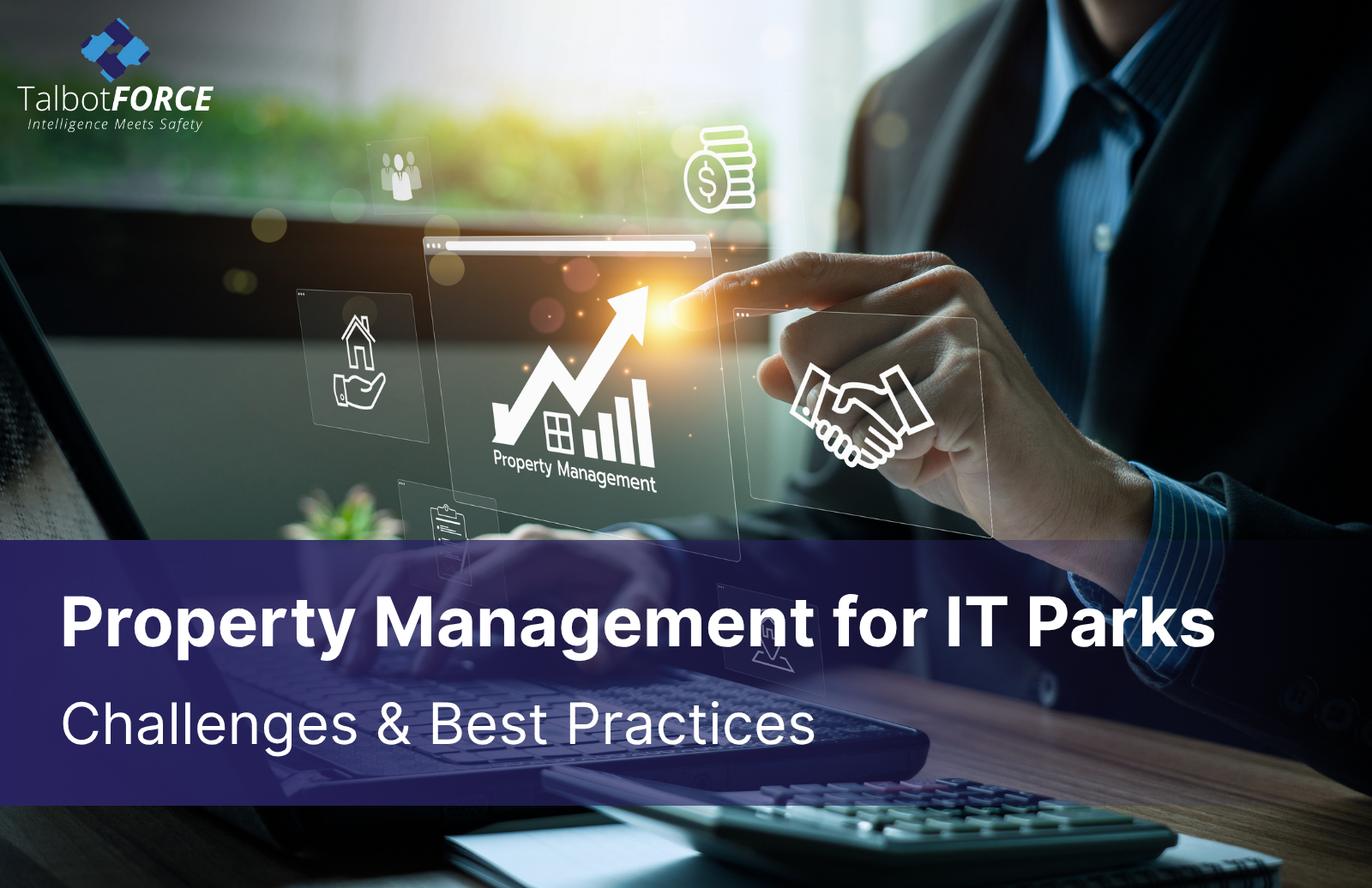Property Management for IT Parks: Challenges & Best Practices
IT park property management is more than keeping lights on. It operates complicated electrical, cooling, network and security systems while providing a seamless tenant experience for large technology tenants. Below are the key challenges and best-practice measures for dealing with each.
Key Challenges & Practical Ways to Solve Them
1. Power Reliability & Backup
- Problem: Frequent outages or unreliable backup systems disrupt data-centre-grade tenants.
- Solutions to execute:
- Conduct an audit of load profiles and test UPS/Genset under realistic loads.
- Implement tiered redundancy (N, N + 1), based on tenants’ needs.
- Follow through with a preventive replacement plan for batteries and generators.
- Options: Outsource an electrical contractor for cycle replacement or train your in-house electricians for replacement when needed every day.
2. Cooling and HVAC Complexity
- Problem: Servers and dense office setups require precise cooling; inefficiencies raise costs.
- Steps to solve:
- Map thermal loads and install zoned controls.
- Use energy-efficient chillers and free-cooling where climate permits
- Schedule predictive maintenance using IoT sensors.
- Options: Invest in centralised Building Management Systems (BMS) or use managed HVAC service contracts.
3. Network & Connectivity Expectations
- Problem: Tenants expect high-bandwidth, low-latency internet and redundancy.
- Steps to solve:
- Provision multi-carrier points of presence (PoPs).
- Offer scalable bandwidth packages and clear SLAs.
- Monitor performance and have failover routes.
- Options: Partner with telecom aggregators or let tenants bring their own carriers (BYOC) with qualified on-site support.
4. Security – Physical and Cyber
- Problem: Large campuses are targets for physical breaches and cyber threats.
- Steps to solve:
- Layered access control (biometrics, smart cards) and CCTV with analytics.
- Strict visitor management and perimeter controls.
- Coordinate with IT teams on network segmentation and incident response.
- Options: Hire integrated security vendors or maintain an in-house security operations centre (SOC) for large sites.
5. Tenant Experience & Service Delivery
- Problem: Retention depends on rapid issue resolution, flexible spaces, and amenities.
- Steps to solve:
- Implement a single-point service portal with SLA tracking.
- Offer flexible fit-outs and plug-and-play meeting zones.
- Regularly survey tenants and act on feedback.
- Options: Use a professional property manager for daily touchpoints or deploy a digital tenant-engagement platform.
Best Practices Checklist for It Park Property Management
- Conduct quarterly infrastructure audits and annual resilience tests.
- Define clear SLAs with response times and escalation paths.
- Use energy-efficiency targets and monitor consumption per square foot.
- Implement BMS and CMMS (computerised maintenance management) for preventive work orders.
- Partner with experienced commercial property services India providers for compliance, statutory support, and large-scale operations.
Conclusion
Effective property management in an IT park combines technical proficiency with tenant-savvy management. By resolving issues into manageable tasks quantified by types—audit, plan, implement, and monitor—owners and facility management teams can manage risk, reduce operating costs, and create a competitive campus to win and keep technology tenants. If you would like a short operational checklist or a tenant SLA template for your facility next, those would be the next steps in our process.
